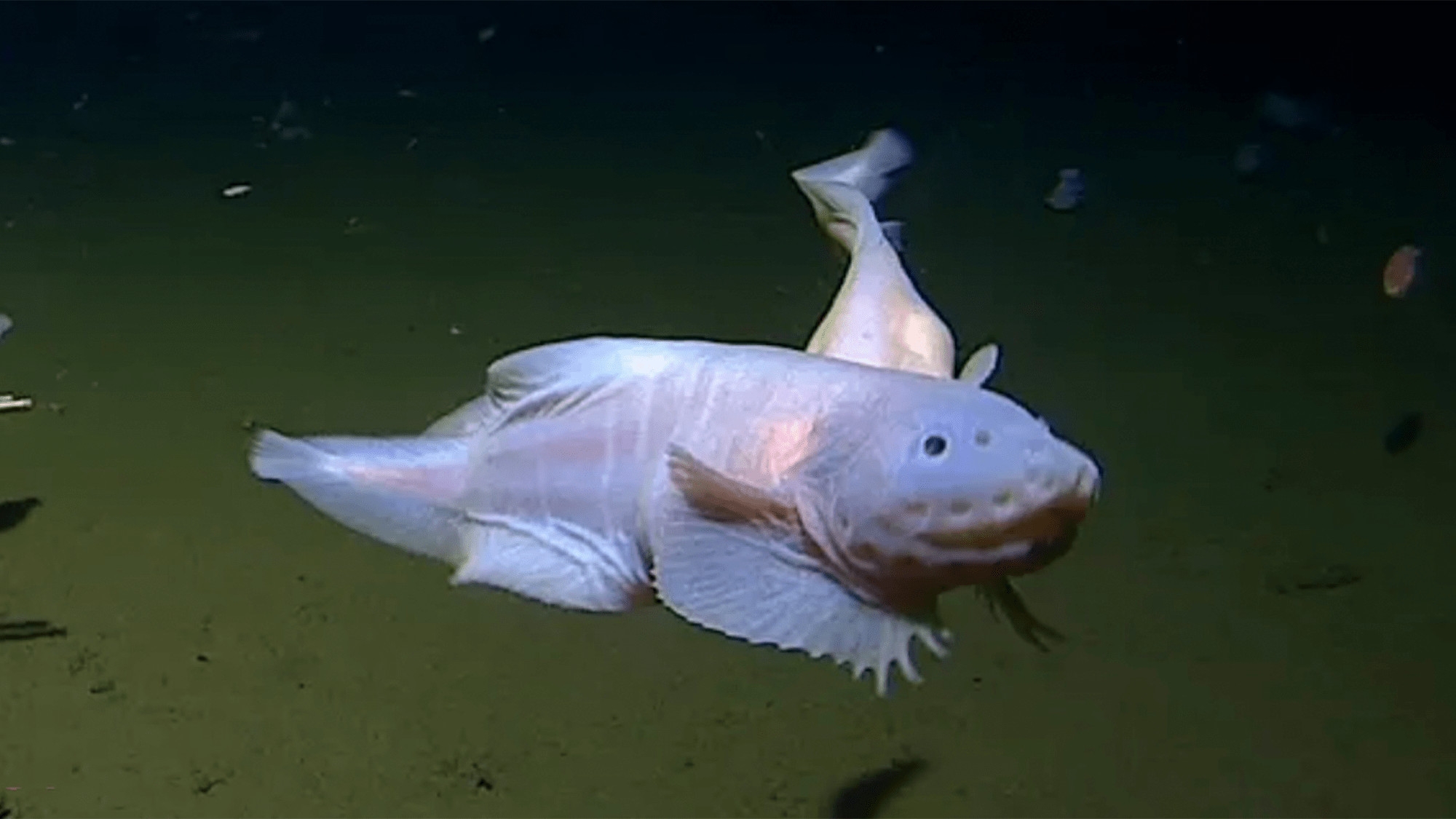

A team of scientists from Australia and Japan didn’t need a super-long fishing pole to catch the deepest fish ever recorded. All it took was a camera, some bait, and a deep-sea submersible support vessel. The team managed to snap a photo of an unknown snailfish species from the genus Pseudoliparis at a record-breaking 27,349 feet below the ocean’s surface.
In August 2022, the team boarded the research ship DSSV Pressure Drop for a two-month long expedition to explore three deep trenches of the northern Pacific Ocean: the 23,950 feet deep Ryukyu trench, the 26,246 feet deep Japan trench, and the 30,511 feet deep Izu-Ogasawara trench. The research was part of a 10 year-long study into the deep sea dwelling fish populations.
[Related: Researchers found signs of human pollution in animals living six miles beneath the sea.]
The small fish was caught on camera in the In the Izu-Ogasawara Trench, south of Japan. This deep sea dweller beats the previous record of 26,830 feet set in 2017 by a Mariana snailfish found in the Mariana trench near Guam.
The team also collected two fish in traps a few days later, this time in the Japan trench at a depth of 26,318 meters. These snailfish named Pseudoliparis belyaevi are believed to be the first fish collected from depths greater than 26,000 feet and have only ever been seen at a depth of 25,272 feet back in 2008.
“The Japanese trenches were incredible places to explore; they are so rich in life, even all the way at the bottom,” University of Western Australia marine biologist Alan Jamieson said in a statement. “We have spent over 15 years researching these deep snailfish; there is so much more to them than simply the depth, but the maximum depth they can survive is truly astonishing. In other trenches such as the Mariana Trench, we were finding them at increasingly deeper depths just creeping over that 8,000m [26,246 feet] mark in fewer and fewer numbers, but around Japan they are really quite abundant.”

Jamieson also discovered the previous record winner in 2017 discovery and worked with a team from the Tokyo University of Marine Science and Technology to deploy the baited cameras in the deepest parts of the trenches.
According to the team, despite a large and “somewhat lively” population of fish that dwell at these intense depths, the solitary Pseudoliparis individual that they found was a very small juvenile. Most young snailfish are typically found living at greater depths than the adults, unlike other deep-sea fish.
“Because there’s nothing else beyond them, the shallow end of the range overlaps with a bunch of other deep-sea fish, so putting juveniles at that end probably means they’ll get eaten,” Jamieson told The Guardian. “When you get down to the mega deep depths, 8,000 plus [meters or [26,246 feet], a lot of them are very, very small.”
[Related: Millions of dead crabs ended up in the deep sea. Scientists still aren’t sure why.]
Almost 10 years ago, Jamieson and his colleagues had hypothesized that it may be biologically impossible for fish to survive at depths greater than this, but after 250 deployments at sea, it seems to be getting closer to becoming a more solid hypothesis.
“The real take-home message for me, is not necessarily that they are living at 8,336m [26,246 feet], but rather we have enough information on this environment to have predicted that these trenches would be where the deepest fish would be,” Jamieson said. “In fact until this expedition, no one had ever seen nor collected a single fish from this entire trench.”